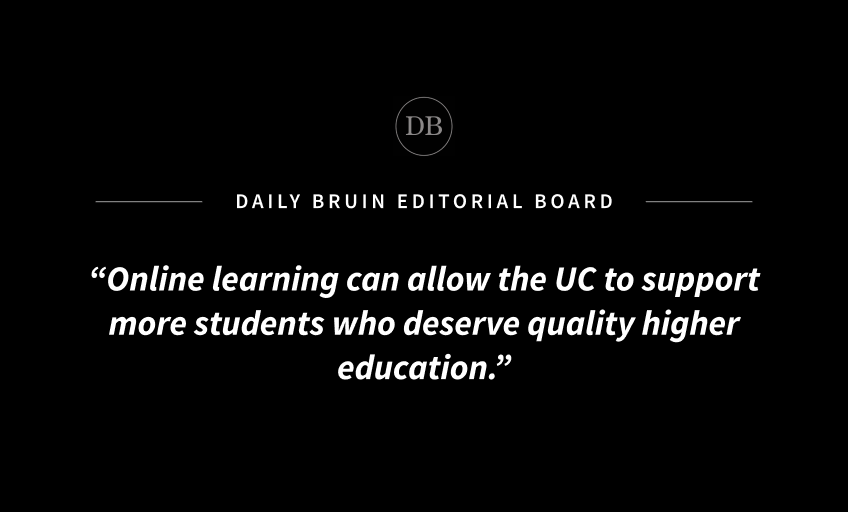Editorial: Remote instruction can be model for UC to improve accessibility

By Editorial Board
Sept. 18, 2021 9:06 a.m.
Editor’s note: Editorials are intended to serve as the jumping-off point, not the conclusion, to discussion. As part of the Daily Bruin’s commitment to its readers, the board hopes to present a responsible and clear analysis of relevant events and news items affecting the lives of those we serve, but our editorials are not representative of the Daily Bruin’s views on issues as a whole. We encourage all readers to reach out to our board members and to respond to our editorials.
Online learning has come with many disappointments, but it’s also created new possibilities.
The University of California should pay close attention to these during the fall and potentially for years to come.
As much as we may hope for the COVID-19 pandemic to be over, it’s clear we aren’t yet out of the woods. According to data from the Los Angeles County Department of Public Health, 25.3% of COVID-19 infections in Los Angeles between May 1 and July 25 were among fully vaccinated individuals. Recent surges in COVID-19 cases due to emerging strains such as the delta variant also pose dangers to public health.
Some UC campuses have raised caution about transitioning to in-person classes. The UC San Diego Academic Senate recently authorized the use of remote instruction for fall, allowing any class to become remote without Senate approval. Other universities such as UCLA and UC Berkeley, however, are standing by their original plans to return to in-person instruction.
Beyond the persistent threat of COVID-19, the return to normal will not be easy. In-person classes and the rigors that accompany them will require students to change how they learn or take tests. Not to mention, many students will be busy acclimating themselves to a campus they may be utterly unfamiliar with.
Remote instruction is by no means a perfect solution; it can exacerbate inequities that make an education that much more unattainable. But the UC must be willing to listen to its students’ concerns and respond in stride.
This means considering the permanent implementation of online learning practices.
It goes without saying that COVID-19 is still prevalent and could potentially last for years to come – adapting larger classes to an online structure could mitigate risks to the health of students, staff and faculty.
Not to mention, some classes may work better in the virtual sphere. Offering major prerequisites, which enroll hundreds of students at a time, online could allow for more flexibility while reducing the stress that comes with finding lecture halls that can accommodate that many students.
Open-note testing, extended windows on exams and recorded lectures – all staples of virtual learning – also increase accessibility. We may have doubted the feasibility of these before the pandemic, but we now know they’re possible on a wide scale. As such, there’s no excuse not to continue them.
Plus, online learning can help alleviate strains on the UC’s physical infrastructure, which can, in turn, enable more students to gain access to a UC education.
The past few years have seen increased demand for the UC but dropping admission rates. For example, UCLA’s admission rate for this year’s incoming students decreased from 14.4% to 10.7%. It was one of two UC campuses that did not extend more admission offers compared to previous years.
Online learning can allow the UC to support more students who deserve quality higher education. In this application cycle alone, the University turned away over 71,000 qualified applicants because, in no small part, of a lack of physical spaces like classrooms and student housing, according to the Los Angeles Times.
That’s not to say the UC should offer all of its classes online. In-person learning has its benefits and should remain a pillar of higher education. But instituting a hybrid model of education for the long haul isn’t a bad idea.
As much as COVID-19 has upended our lives, it has shown us what we can do better. The UC needs to learn from this and do what it can to improve access to its campuses while taking into account the inequities inherent in whatever it chooses to pursue.
What the University shouldn’t do is return to a model of instruction that is inaccessible and unaccommodating.
Equity must always be the UC’s priority. As we embark on a new chapter of higher education, the University should consider any measure, however innovative, to ensure that students aren’t left by the wayside.


